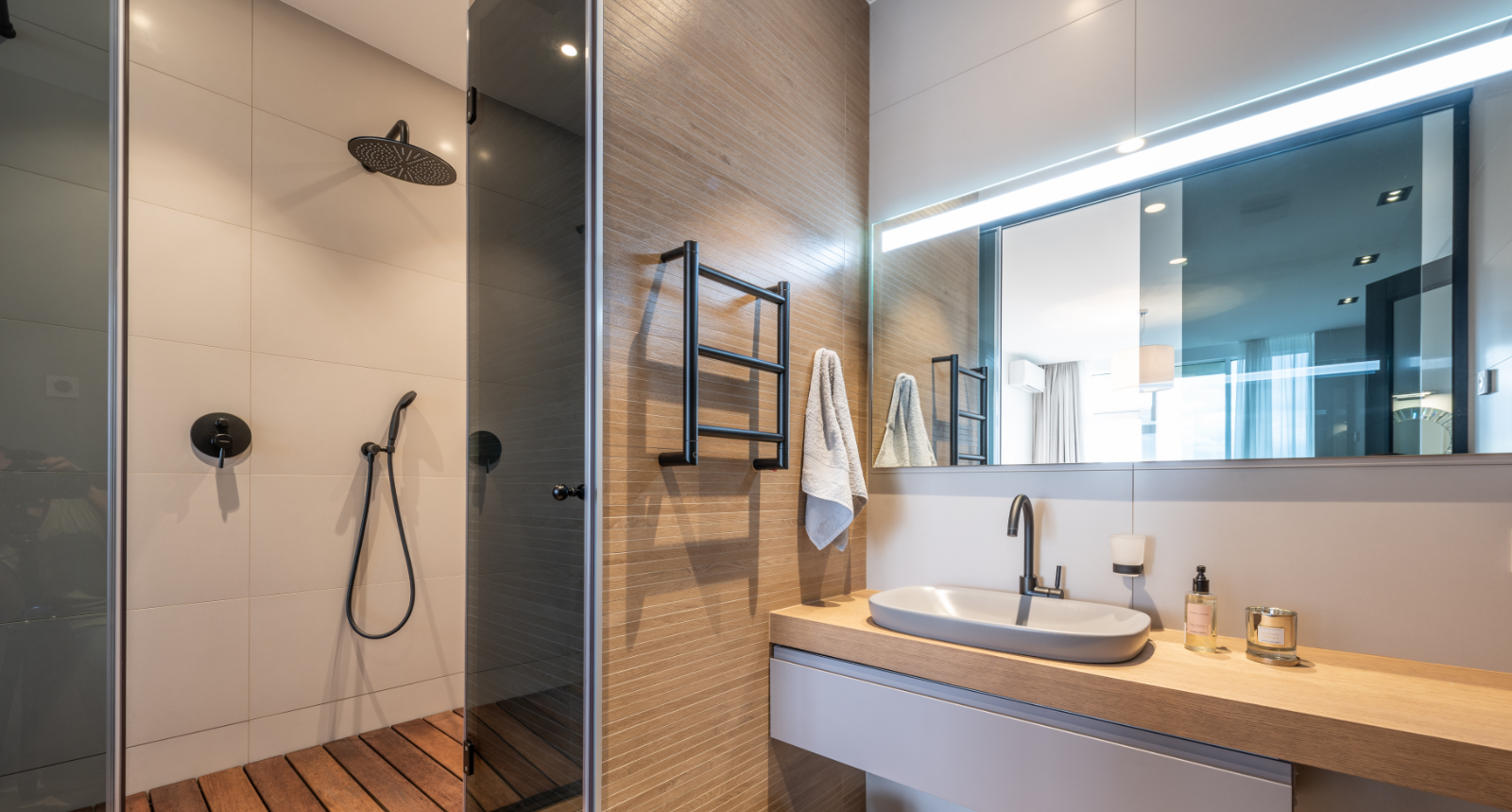
Maximizing Small Spaces: Tips and Tricks
In today’s urbanizing world, many homeowners find themselves in dwellings with limited space. But a small space doesn’t mean you have to compromise on style, functionality, or comfort. With a little creativity and some strategic planning, you can make the most of every square inch. Here’s how:
Multi-Functional Furniture: Double-Duty Delights
Homeowners often have to compromise on space but not on functionality or style. Multi-functional furniture embodies this principle by serving dual or even multiple purposes, merging utility with aesthetics in a seamless manner. Let’s take a look at some multi-functional furniture options you may utilize in your home:
1. Convertible Sofas: A classic choice for small apartments or rooms, convertible sofas can transform from a seating area during the day to a bed at night. This piece is especially useful for those who frequently have guests but lack a spare bedroom.
2. Ottomans with Storage: These are not just for resting your feet. Many ottomans open up to reveal storage space inside, perfect for stashing away blankets, magazines, or toys.
3. Expandable Dining Tables: Ideal for those who entertain, these tables can be compact for everyday use and expanded when you have guests over.
4. Wall-mounted Desks: These desks save floor space and can be folded up when not in use, making them perfect for home offices in smaller rooms.

Strategic Placement for Optimal Utility
Simply owning multi-functional furniture isn’t enough; its strategic placement can further enhance its utility. For instance, placing a convertible sofa near a window can allow it to double as a daytime reading nook and a nighttime bed. Similarly, a wall-mounted desk situated near a power outlet can quickly become a charging station, study area, or workspace.
Choosing the Right Piece for the Right Space
Before investing in multi-functional furniture, assess the specific needs of the room. A bedroom might benefit from a bed with built-in drawers, offering both a comfortable sleeping space and storage solution. On the other hand, a living room could be better suited for an ottoman that serves as both a coffee table and storage unit.
Adaptability is Key
As your needs change, your furniture should be able to adapt. A dining table with removable leaves, for example, can be adjusted based on the number of guests. Such flexibility not only ensures that space is used efficiently but also that the homeowner’s changing needs are always met.
Consider Flow and Accessibility
When integrating multi-functional furniture into a room, it’s essential to maintain a natural flow of movement. Avoid cluttering pathways or blocking essential areas. For instance, if a wall-mounted desk folds out, ensure there’s enough room for someone to sit and work without obstructing the room’s flow.
Aesthetic Integration
While functionality is paramount, the aesthetic appeal shouldn’t be overlooked. Choose pieces that complement the existing decor of the room. A sleek, modern expandable dining table might not suit a room with rustic, farmhouse decor. Thus, balancing form and function is vital for creating harmonious interiors.
Multi-functional furniture represents a forward-thinking approach to interior design. In an era where space is increasingly becoming a luxury, such furniture pieces ensure that homeowners can enjoy the best of both worlds: style and functionality. With careful consideration and strategic placement, multi-functional furniture can truly transform a space, making it ready for whatever the future holds.

Clever Storage Solutions: Every Nook and Cranny
When dealing with limited space, thinking outside the box becomes essential. By leveraging these innovative storage solutions, homeowners can ensure that every square foot of their home is both functional and stylish. Remember, it’s not just about having space but making the most of it.
Under-the-Bed Storage: An Overlooked Goldmine
Often the most underutilized space in a room, the area beneath the bed can be a treasure trove of storage potential. With the use of flat storage bins, homeowners can store seasonal clothes, shoes, or even memorabilia. For those looking for a more integrated solution, beds with built-in drawers or a lofted design can offer substantial space without compromising the room’s aesthetics.
Corner Shelving: Making the Most of Angles
Every room has corners, but how often do we leverage them for storage? Installing corner shelving can instantly transform these often-neglected spaces into functional storage areas. Whether it’s for books, decorative items, or small indoor plants, corner shelves add character while serving a practical purpose.
Over-the-Door Organizers: Vertical Potential
The back of a door is another frequently overlooked space. Over-the-door hanging organizers can be a lifesaver, especially in closets or bathrooms. They can hold anything from shoes to accessories, toiletries to craft supplies, ensuring that items are easily accessible and neatly organized.
Magnetic Strips: Holders for Metallic Items
Especially useful in kitchens and bathrooms, magnetic strips can be a game-changer. In the kitchen, they can hold knives or spice jars with metal lids, freeing up counter space. In the bathroom, they’re perfect for tweezers, bobby pins, and other metallic tools.
Pull-Out Pantries: Slim and Efficient
For narrow spaces between appliances or furniture, a pull-out pantry or cabinet can be a clever addition. These slender storage units are perfect for canned goods, spices, or even brooms and mops, ensuring that every inch of space is put to good use.
Nested Furniture: A Set Within a Set
Furniture pieces that nest within each other, like stacked tables or chairs, can be separated when needed and combined to save space. They’re not only functional but also often serve as a conversation piece due to their unique design.

Optical Illusions: Making Spaces Seem Larger
By harnessing the power of optical illusions, homeowners can transform their living spaces. What’s essential is understanding that our perception of space is as much about visual tricks as it is about actual square footage. With these techniques, even the coziest of corners can feel like expansive areas, ready to breathe and grow.
Use of Light and Reflection
Mirrors: Mirrors are the quintessential tool for creating an illusion of space. When strategically placed, they can double the visual area of a room. A large mirror, or an arrangement of several smaller ones, can reflect light and brighten a space, making it feel airier and more open.
Glossy Surfaces: Whether it’s polished stone countertops or high-gloss paint, shiny surfaces reflect light and add depth to a space. The reflection can give an impression of extended space, especially in smaller rooms.
Streamlined Furniture & Design
Low-Profile Furniture: By choosing furniture that sits closer to the ground, the available vertical space in a room is increased, making ceilings seem higher than they are.
Transparent Furniture: Items made of clear materials, like glass or acrylic, offer function without adding visual weight, making the space feel less cluttered.
Paint Techniques and Colors
Monochromatic Schemes: Using varying shades of a single color can unify a space, making it feel larger. This doesn’t mean you’re limited to whites or neutrals; even darker colors can work if used consistently.
Vertical or Horizontal Stripes: Just as they do with clothing, stripes can elongate a space. Vertical stripes on walls can heighten a room, while horizontal stripes can widen it.

Flooring and Layout
Continuous Flooring: Consistent flooring throughout a home can create an uninterrupted flow, making the entire space feel more expansive. Avoid changing flooring types from room to room in small spaces.
Diagonal Lines: Laying tiles or wooden planks diagonally can draw the eye outward, elongating the space.
Window Treatments
Floor-to-Ceiling Curtains: Installing curtain rods closer to the ceiling and using longer drapes can create an illusion of taller windows and higher ceilings.
Clear Sightlines: Keep windows as unobstructed as possible to allow for maximum light and a clear view outside, which extends the perceived depth of a room.
Declutter and Simplify
Avoid Overcrowding: Too many items can make a room feel cramped. Adopting a minimalist mindset and prioritizing essential items can free up space.
Open Shelving: Though it requires tidiness, open shelving can prevent a room from feeling boxed in, compared to closed cabinets.
While you might be limited by the physical dimensions of your home, your imagination has no such boundaries. Whether you’re living in a compact city apartment or simply looking to make the most of a particular room in your house, these tips can help transform your space into an open, organized, and stylish haven.
Textures and Patterns: The Subtle Game Changers
When we talk about making a space appear larger, the impact of textures and patterns often goes unnoticed. But they play a crucial role in shaping perceptions. Using smooth and sleek textures can make a room feel less cluttered, whereas rough, chunky textures might make it feel busier.
For instance, consider a sofa. A sleek leather sofa, with its smooth finish, can make a living area feel open. In contrast, a fluffy, heavily textured sofa might make the same space feel crowded. The same applies to rugs, curtains, and other decor items. Think streamlined and sleek for a more spacious feel.
Patterns can also play tricks on the eye. Horizontal patterns, such as stripes on a wall, can make a room appear wider. On the other hand, vertical stripes can make low ceilings seem higher. However, it’s essential to be cautious with patterns. Overdoing them can overwhelm a small space. For small rooms, it might be better to stick with one primary patterned piece, like an accent wall or a statement rug, rather than filling the room with multiple competing designs.

Consistent Themes for a Unified Look
One of the reasons a space might feel small or confined is if there are too many contrasting styles and colors. Keeping a consistent theme not only streamlines the design process but also makes the room feel unified and, therefore, larger.
For example, if you’re going for a coastal vibe, stick with light blues, whites, and sandy beige colors. Add in some natural wood and stone elements for a cohesive look. This theme will create a flow from one area to the next, making the entire space feel like one large, unified room.
Open Up With Open Shelving
While it’s essential to have closed storage options to hide away clutter, incorporating open shelving can give depth to a space. Open shelves, especially when they’re used to display cherished items, draw the eye in and make a room feel more expansive. This is particularly effective in kitchens or living rooms.
Prioritize Flow and Movement
One of the keys to making a space feel bigger is ensuring there’s a sense of flow. Avoid placing furniture in a way that obstructs paths or views. Round furniture pieces, like round coffee tables, often work well in small spaces, as they lack sharp corners and promote better movement.
While physical dimensions set certain limits, our perception of space is malleable. With the right techniques and design principles, we can transform any area, no matter its size, into a space that feels inviting, open, and expansive. Whether you’re working with a cozy studio apartment or looking to make a specific room in your home feel larger, these strategies can help you achieve your vision.
At USA Shower and Bath, we understand the importance of making the most of your space. While we specialize in bathroom renovations, our dedication to craftsmanship and design spills over into every corner of the home. If you ever consider remodeling your bathroom to maximize its potential, don’t hesitate to reach out to our expert team.
